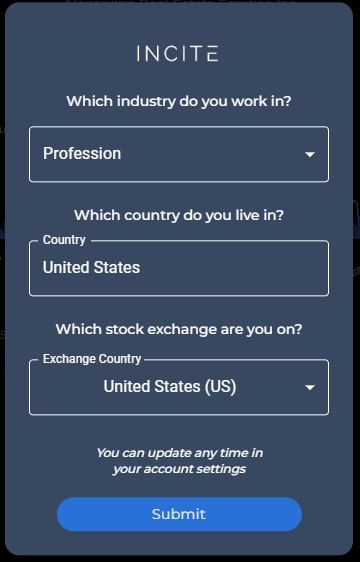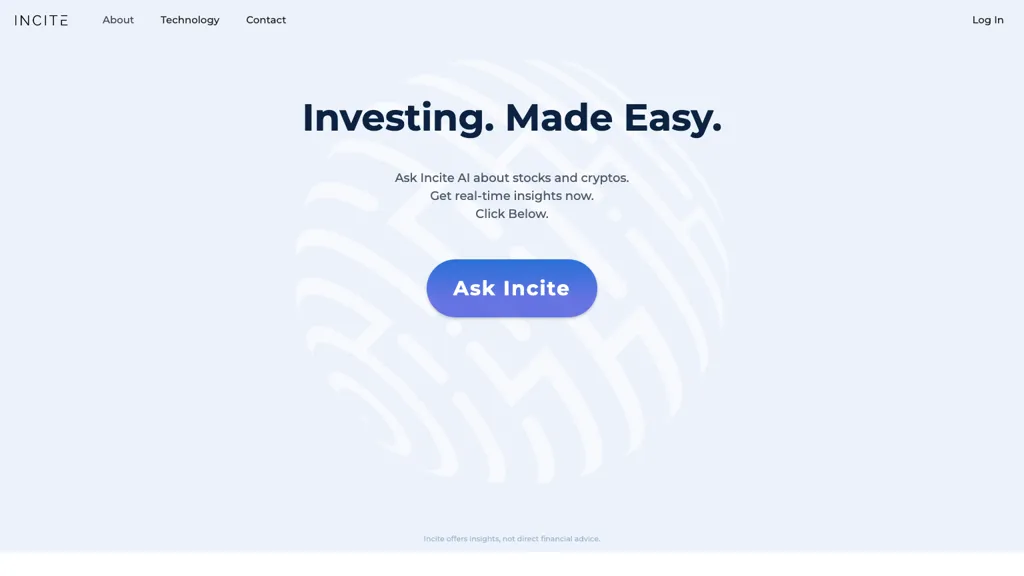It is crucial to assess the quality of data and sources used by AI-driven trading platforms as well as platforms for stock prediction to ensure accurate and reliable data. Poor data quality can cause inaccurate predictions, financial losses and mistrust on the platform. Here are 10 top methods to evaluate sources and data quality:
1. Verify source of data
Verify the source of the data: Ensure the platform uses reputable and well-known data suppliers (e.g., Bloomberg, Reuters, Morningstar, or exchanges such as NYSE, NASDAQ).
Transparency - The platform must be open about the sources of its data and should regularly update them.
Don't rely solely on one source: reliable platforms will frequently combine data from different sources to minimize bias.
2. Assess Data Freshness
Real-time and. Delayed Data: Find out whether the platform provides actual-time data or delaying information. Real-time trading needs real-time data. Delayed data is enough for long-term analysis.
Check the update frequency (e.g. minute-by-minute updates, hourly updates, daily updates).
Historical data consistency: Make sure that the data from the past is clear of any gaps or anomalies.
3. Evaluate Data Completeness
Find out if there is missing or incorrect information.
Coverage. Make sure your platform is able to offer a range of markets, stocks, and indices that are relevant to your strategy of trading.
Corporate actions: Make sure the platform is able to be able to account for splits in stock or dividends. Also, check if it can account for mergers.
4. Accuracy of test results
Cross-verify your data: Check the platform's data against other trustworthy sources.
Error detection - Look for outliers, incorrect values or financial indicators that are not match.
Backtesting - Use data from the past for back-testing strategies used in trading to see if results match expectations.
5. Examine the Data Granularity
Level of Detail: Make sure that the platform can provide a full set of data, including price quantity bidding-asking spreads, and depth of the order book.
Financial metrics: Check if the platform provides detailed financial statements (income statement, balance sheet, cash flow) and the most important ratios (P/E P/B, ROE, etc. ).
6. Make sure that the data processing is checked and Cleaning
Data normalization: Ensure the platform normalizes the data (e.g. and adjusting for splits, dividends) to maintain consistency.
Outlier handling: Check the way the platform handles anomalies and outliers.
Estimation of missing data: Make sure that the platform is based on reliable methods to fill in missing data.
7. Evaluate the consistency of data
All data should be aligned with the same timezone. This will prevent any discrepancies.
Format consistency: Determine if the data is in the same format (e.g., units, currency).
Cross-market uniformity: Make sure that the data from various markets or exchanges is harmonized.
8. Determine the relevancy of data
Relevance to your strategy for trading Make sure the information you use is in line with your style of trading (e.g. analytical techniques quantitative modeling or fundamental analysis).
Feature selection: Check if the platform includes relevant features (e.g. sentiment analysis, macroeconomic indicators and news data) which can improve the accuracy of predictions.
9. Review Data Security and Integrity
Data encryption: Ensure that the platform is using encryption for data transmission and storage.
Tamper proofing: Make sure that the information on the platform isn't being altered.
Conformity: Ensure that the platform is compliant with any laws governing data protection (e.g. GDPR or CCPA).
10. The Transparency Model of AI Platform is Tested
Explainability: Ensure the platform provides insights on the way in which the AI model makes use of the data to generate predictions.
Bias detection - Check to determine if your system actively monitors models and data for biases.
Performance metrics: Assess the accuracy of the platform by looking at its track record, performance metrics and recall metrics (e.g. precision and accuracy).
Bonus Tips:
Feedback from users and reputation Review reviews of users and feedback to determine the reliability of the platform.
Trial period: Try the platform free of charge to test the functionality and the features available before you commit.
Support for customers: Ensure that the platform provides robust support for data-related problems.
Follow these tips to assess the data source and quality for AI stock prediction platforms. Make educated decisions regarding trading by using this information. Check out the most popular his response on ai investing for more tips including investment ai, best ai for trading, ai stock picker, ai investment app, best ai stock trading bot free, stock ai, ai for stock predictions, ai for stock predictions, chart ai trading assistant, ai stock picker and more.

Top 10 Tips On Assessing The Regulatory Compliance Of Ai Stock Analysing Trading Platforms
When it comes to evaluating AI trading platforms, compliance with regulatory requirements is crucial. Compliance is essential since it ensures that the platform adheres to regulations and legal frameworks. It also safeguards users' data. Here are 10 best suggestions to evaluate the regulatory compliance of these platforms.
1. Verify licensing and registration
Regulators: Make sure the license and registration is registered with the relevant financial regulatory authorities (e.g. SEC or FCA in the USA, ASIC or ASIC in Australia).
Verify the broker relationship If your platform is integrated with brokers or brokers, be sure that these brokers are licensed and regulated.
Public records: Go to the website of the regulator to find the platform's registration status and any past violations.
2. Compliance with Data Privacy Assessment
GDPR: Make sure that your platform is compliant with the General Data Protection Regulation.
CCPA : California Consumer Privacy Act (CCPA) conformity should be checked by users.
Policies on handling data: Review the policy on data privacy of the platform to make sure it clarifies the methods by which data from users are collected, stored, and shared.
3. Examine Anti-Money Laundering (AML) Measures
AML policies - Check that your platform's AML policies are robust and effective to detect, prevent and detect money laundering.
KYC procedures. Check if your platform follows Know Your Customer processes for verifying user identity.
Transaction monitoring: Determine whether the platform is capable of monitoring transactions and reporting suspicious transactions to relevant authorities.
4. Make sure that you are in compliance with Trading Regulations
Market manipulation: Make sure that the platform includes measures to protect against manipulation of the market such as spoofing and wash trading.
Types of orders: Make sure that the platform is compliant with the rules governing different types of orders (e.g. no illegal stop-loss hunt).
Best execution: Make sure that the platform adheres to the best execution methods to ensure that trades are executed at the most favorable price.
5. Cybersecurity Assessment
Data encryption: Make sure the platform protects data during transit and while at rest, using encryption.
Response to incidents: Verify if the platform has a clearly defined incident response strategy for cyberattacks or data breaches.
Certifications: Check if the platform is certified for cybersecurity.
6. Transparency as well as Disclosure and Evaluation
Disclosure of fees: Ensure that the website discloses all fees including hidden or extra fees.
Risk disclosure: Check if there are clear disclosures of the risk, especially for high-risk or leveraged trading strategies.
Performance reporting: Ensure that the AI platform is transparent and provides exact performance information to its AI model.
7. Make sure that you are in compliance with International Regulations
Trading across borders. If you intend to conduct international trade, make sure whether your platform is compliant with all applicable regulations.
Tax reporting: Determine the platform's tools or reports for users to comply with tax regulations.
Compliance with sanctions: Ensure that the platform adheres to international sanctions and is not allowing trading with banned organizations or nations.
8. Reviewing Audit trail trails and Record-Keeping
Transaction records: Ensure that the platform keeps detailed records of each transaction for reasons of auditing and regulatory purposes.
User activity logs - Make sure that the platform records every user's activity, including transactions that are made and any modifications to account settings.
Audit readiness: Ensure the platform has all of the necessary documentation and logs to be able to pass a review by a regulator.
9. Evaluation of Compliance with AI Specific Regulations
Algorithmic trading rules: If you're using a platform that allows algorithmic trading ensure that it is in compliance with relevant regulatory frameworks, such as MiFID II or Reg SCI which are in Europe and in the U.S.
Fairness and Integrity: Determine whether the platform's AI models are monitored and tempered to prevent bias.
Explainability: Make sure the platform provides clear explanations for AI-driven predictions and decision making in accordance with certain rules.
10. Review feedback from users and regulatory history
User reviews: Check out the feedback of users and compare it to the platform's regulatory standards.
Regulatory history - Check to see if the platform is associated with any prior penalties or violations of regulations.
Third-party Audits: Verify that the platform undergoes third-party inspections to make sure it is in compliance with all applicable regulations.
Bonus Tips:
Legal consultation: Talk to an expert in the field to determine whether your platform is in compliance with regulations.
Free trial period: You can use a demo or free trial to evaluate the features that ensure compliance of the platform and its documentation.
Support for customers: Make sure the platform offers support for compliance-related questions or issues.
Following these tips can help you evaluate the regulatory compliance for AI stock-predicting/analyzing trading platform. You will be able pick a system that is in compliance with the legal frameworks, while also protecting your interests. The compliance reduces legal risk and improves trust on the platform. Read the top rated ai stock analysis blog for site recommendations including ai options, stock trading ai, ai options trading, stock predictor, chart analysis ai, best ai stocks, ai stock price prediction, ai options trading, best ai stock prediction, investing with ai and more.
